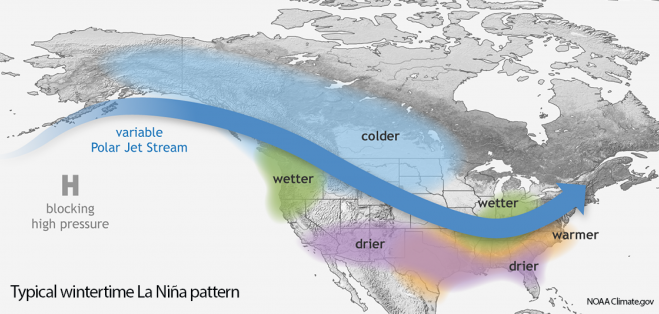
A La Niña climate pattern has developed and is likely to persist through winter, according to an advisory issued by NOAA’s Climate Prediction Center.
La Niña—translated from Spanish as “little girl”—is a natural ocean-atmospheric phenomenon marked by cooler-than-average sea-surface temperatures across the central and eastern Pacific Ocean near the equator, the opposite of El Niño (“little boy”), which features warmer-than-average sea-surface temperatures in that region.
“La Niña can contribute to an increase in Atlantic hurricane activity by weakening the wind shear over the Caribbean Sea and tropical Atlantic Basin, which enables storms to develop and intensify,” said Mike Halpert, deputy director of NOAA’s Climate Prediction Center. “The potential for La Niña development was factored into our updated Atlantic hurricane season outlook issued in August.”
For the months ahead, scientists say there is a 75% chance that La Niña will be in place from December 2020 through February 2021.
During the winter, La Niña typically brings above-average precipitation and colder-than-average temperatures along the northern tier of the U.S., along with below-average precipitation and above-average temperatures across the South. A region of concern this winter will be the Southwest, where a weak summer monsoon resulted in extreme drought.
The last La Niña appeared during the winter of 2017-2018, and El Niño followed in 2018-2019. When neither climate pattern is present, as we saw during the winter of 2019-2020, the El Niño Southern Oscillation (ENSO) is neutral and does not influence global climate patterns.
